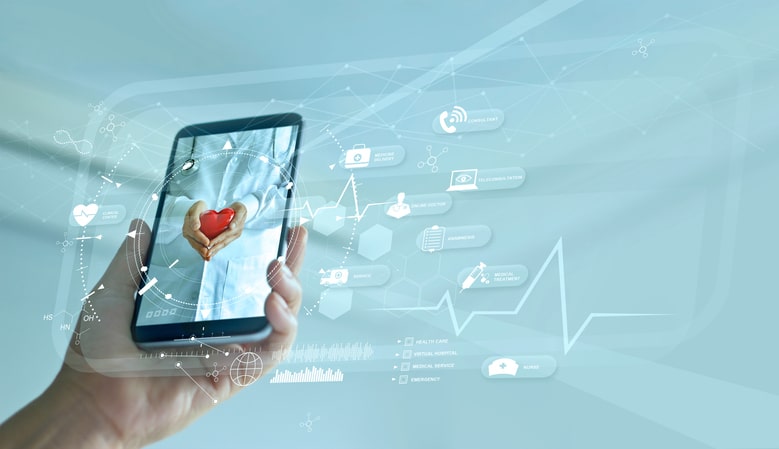 Telehealth is one of the fastest-growing healthcare industries – and for very good reason. During the pandemic, the benefits of bringing the healing arts to any patient anywhere via a virtual platform quickly became obvious. In the decade ahead, telehealth will become increasingly vital as shortages of all types of healthcare professionals worsen, affecting patient access to care in rural and urban regions throughout the country. Its efficacy in controlling costs will be an important factor for healthcare organizations.
Telehealth is one of the fastest-growing healthcare industries – and for very good reason. During the pandemic, the benefits of bringing the healing arts to any patient anywhere via a virtual platform quickly became obvious. In the decade ahead, telehealth will become increasingly vital as shortages of all types of healthcare professionals worsen, affecting patient access to care in rural and urban regions throughout the country. Its efficacy in controlling costs will be an important factor for healthcare organizations.
While effective technology is necessary, the power and potential of telehealth is really about people and innovation. Its age-old mission is patient care – to deliver the highest quality care to people who need it. The effectiveness of telehealth in reducing the spread of disease became obvious very quickly during the pandemic. Telehealth can also extend care to help solve the complexities of care delivery by bringing specialties and other services to places where people don’t have access to them or where practitioner shortages are acute. Telehealth is not always about one practitioner seeing one patient but can also bolster team care by bringing together multiple stakeholders in real time – any combination of nurses, therapists, general practitioners, specialists, care coordinators, social workers, family members, interpreters, and others depending on need.
In fact, telehealth can enhance almost every care setting through the addition of complementary clinical care, even expanding population health and wellness through mobile and desktop applications and improving health equity by bringing more and better care to underserved populations. All these telehealth services are dependent on the people who provide them.
Most telehealth companies today are technology companies. Few provide the staffing, clinical, and analytical expertise to help meet the needs of patients and healthcare organizations. Staffing a virtual care environment is very different from staffing a hospital or clinic; practitioners need to be trained or experienced in helping people via telehealth.
PREMIUM CONTENT: Largest Healthcare Staffing Firms in the United States: 2020 Update
For many healthcare organizations, telehealth is an entirely new care environment where they have little experience. In addition to clinicians trained and experienced in telehealth, they may need expertise and analytics in finding and optimizing opportunities for utilizing telehealth. They may need workforce technology tools to integrate telehealth into their existing clinical services, such as on-screen interpreters and integrated diagnostic devices for patients, or mobile applications for consultation and scheduling among practitioners.
Telehealth can also be used by healthcare organizations and practitioners for talent acquisition and finding jobs. Virtual applications are becoming vital for processes for clinical staffing, such as licensure, credentialing, recruitment, interviewing, placement, and onboarding.
For patient care, integration and adaption of remote monitoring tools with telehealth can transform post-hospital discharge, quarantines, and care for people with multiple chronic conditions – situations that are increasingly important during the pandemic and with the rapid aging of the U.S. population. Other innovations include the integration of everyday consumer health devices, such as glucose and heart monitors, which can expand telehealth to many more people and shift care to the home, along with facilitating team care and controlling costs.
Telehealth utilization skyrocketed during the pandemic as licensure restrictions eased and healthcare providers were allowed full reimbursement for many new telehealth services. However, several major private insurers are pulling back some of their coverage of telehealth for non-Covid health issues. Despite some recent uncertainty about reimbursements, telehealth is expected to continue to expand, especially if policy questions regarding payers, state licensure, and other barriers can be addressed.
Telehealth can be a game-changing innovation in healthcare that expands access to care for more people who need it while providing specialty care for people who otherwise can’t get it. Because of its flexibility, telehealth can be integrated into almost any existing care environment or combined with other services to create new innovations in patient care. But as with all healthcare services, telehealth is only as good as the skills, caring, and vision of the people who utilize it. People are the key to success in any healthcare delivery system.